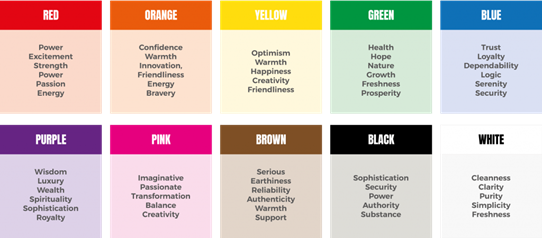Content begins here
Contenido de la página principal
Pulsa para colapsar
Non-verbal communication skills
Introduction
Non-verbal communication is made of a series of signals that we send to our interlocutors while communicating. Those signals are often so subtle that we are not consciously aware of them, however, psychologists and experts in communication have identified the most common elements of nonverbal communication that play an important role in interpersonal interaction.
One of the most primordial elements of nonverbal language is body language, which was presented in lesson 2. However, there are many other signals that, beyond our corporate behaviours, also contribute to mutual understanding.
Once this lesson is completed and approved, learners will be able to:
- Identify signals belonging to the non-verbal language.
- Match the non-verbal signals that they send to others with the message that they wish to deliver.
In this lesson, we will learn how to detect and identify elements of non-verbal signals and analyse their meaning.
Then, we will learn how to adapt the signals we send to others to make it a powerful instrument that comes to support our speech and strengthen our message.
Main non-verbal communication signals
There are many signals that influence our understanding of a message, starting from the appearance of our interlocutor, its body language, paralinguistics, but also our environment or cultural background. We will review here some of the most important non-verbal communication signals.
Physical appearance
Our physical appearance will give the first impression before even we start talking. Our entire body appearance already delivers a message, that will change according to our clothing, the choice of colours that we are wearing, the hairstyle, make-up, accessories… Colour in communication is indeed an important factor as it can evoke different moods or call to different meanings (black for mourning, for instance).
Body language and facial expressions
You can refer to our lesson 1 on this topic.
Paralinguistics
Paralinguistic elements are all those little vocal communications that are not the verbal language itself but surround it. It includes for instance the tone of voice, the level of the voice (loudness) or the inflexion. It also includes filters, filled pauses, hesitation marker or planner which are sounds or words that are spoken in conversation by one participant to signal to others a pause to think without giving the impression of having finished speaking.
Space and proximity
The personal space is also an important type of non-verbal communication. It refers to the amount of distance that you keep with your interlocutor(s)
Physical contact
Touch can be used to communicate affection or familiarity. It can also be used to communicate status and power. It is to be used cautiously in a business context, especially if you are from different sexes.
Other elements of our surrounding environment
If you are making a speech, the use of artefacts might also influence the message. The room or space where you are now of talking will influence the dialogue, and elements such as the temperature or the light will change the perceptions of your interlocutor. Also, if you will use a PowerPoint presentation, you need to make sure that the text and images that you present will support your speech well.
Importance of culture
As already mentioned in the previous lesson, culture also has an influence on nonverbal behaviours and should be cared to avoid misunderstandings.
Take care about the environment
From the above list, it is already possible to establish a list of the different elements that will influence the perception of the message by a receptor. It is not always possible to handle all the elements that will contribute to a positive dialogue. For instance, you might unfortunately not decide about the weather and the light in the space where you are. However, and besides yourself and your behaviour, there are elements that you can take care of:
- Indoor, you can take care, if you are the host, of the room decoration, place of tables and seats, artificial light, heating. Thanks to this, you will choose the proximity among participants (distance between seats) and influence their level of comfort in the space.
- Outdoor, you can choose the place, a café/restaurant/park/public area…
- Food and drinks: talking while enjoying food and drinks also influence the atmosphere, so to make it more formal or informal
- Use of supporting technologies: computers and screen, presentations, videos, etc.
- Time allocated to the communication: duration, but also in the morning or in the afternoon… The attention paid by your interlocutor won’t be the same in the morning as after lunch.
Match the colour
In your appearance or in your artefacts (presentations, etc.), colours have meaning. Here are some basic meanings of colours that might be useful for you to prepare for your talk.

Conclusions
Non-verbal communication is fundamental to properly communicate. Beyond body language, there are many elements that will influence the way a message is received and interpreted. Also, it is important to adequately prepare oneself before an important talk or presentation to make sure that the best conditions are met that will support the communication.
Video and PDF presentationPulsa para colapsar
The following video explains the content of this lesson and shows some examples:
Video T4.L3. Non-verbal communication skills
Here you have the content of the video in pdf in case you need to use it in your classroom:
Lesson contents in PDFPulsa para colapsar
Here you have the contents of the lesson in PDF:

